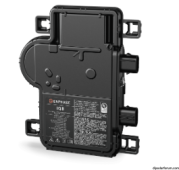I have limited time and a main job to earn money, so testing will be in small incremental steps as I have spare time.I'm curious about the grid profile and other experiment setup as well. A couple of the numbers and setup don't make sense.
How were the battery charge settings chosen? Can you tell the XW to have maximum shift of 63 and use relay disconnect above that?
Why did FW start at 98%? Is it because of the low battery charge current? Did you try with 90% which is the recommended setting for XW? Does XW use the grid code F-W settings to determine the shift range? (I'm going off this document https://www.solar-electric.com/lib/wind-sun/Conext-XW-Pro-SW-AC-Coupling-Guide.pdf)
View attachment 178072
View attachment 178073
Grid Profile: IEEE 1547 2018 for both IQ8's and XW-Pro
The XW-Pro AC coupling guide you've cited is out-of-date and the p(f) configurability is no longer available in the XW-Pro latest firmware I have.
There are no properties or config parameters to tie p(f) to SOC or battery voltage over time and set an upper limit for f.
There were 2 key issues I wanted to test:
- are there micro-inverters that can be AC-coupled with XW-Pro?
- why are AC-coupled IQ8 inverters shutting down without restarting?







